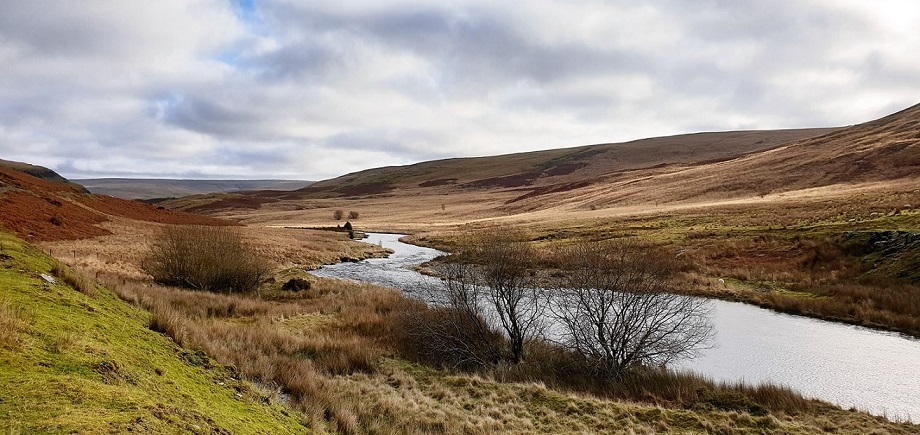These articles are now archived and will no longer be updated.

Claerwen River, Elan Valley. Picture: Sara Barrento.
New research led by Swansea University academics and assisted by citizen scientists, has found that 99% of river basins in the UK are fragmented by artificial barriers like dams, weirs, and culverts. Urgent action is needed to reconnect rivers, to ensure their long-term health, and the health of the communities around them.
With help from citizen scientists from across the UK, Swansea researchers working on the EU Horizon 2020 project Adaptive Management of Barriers in European Rivers (AMBER), recorded a total of 1,232 barriers. This is a far higher than the official numbers of barriers recorded, and the team are now calling on more people who regularly walk beside their local rivers to record their observations on the Barrier Tracker app, which can be downloaded for free, to help build a more accurate picture of the health of rivers and waterways in the UK.
There are very few free-flowing rivers in England, Scotland, and Wales, with an average of at least one artificial barrier every 1.5 kilometre. This means that there is less freedom for fish, insects, and aquatic plants to thrive.
Some barriers are needed to produce drinking water, to create irrigation, for energy production and for flood protection systems, as well as for river crossings, but it is vital that the negative impacts these barriers create are minimised. Weirs, small hydropower structures, big dams, culverts and fords break the flow, fragment waterways, isolate habitats and weaken wildlife populations.
To date, the findings have shown:
- dams may be big but represent less than 2% of the barriers recorded.
- almost half of the recorded barriers are ramps (43%) followed by weirs (23%) and culverts (21%).
After analysing field data and existing databases of barriers in the UK, researchers on the AMBER project also found:
- existing information for these barriers’ underestimates stream fragmentation by at least 68 %.
- Instead of 23,618 barriers there could be as many as 66,381.
- Small barriers like fords, culverts and weirs are missing from existing data.
AMBER Project Coordinator and Principal Investigator, Professor Carlos Garcia de Leaniz said: “With the recent lockdowns and continued social distancing, our worlds have suddenly shrunk to little more than the size of our homes. But going out and walking beside a flowing river can improve our wellbeing and we are calling for more people go out to their local rivers and record the barriers they see. This time outside not only will have huge benefits for their wellbeing, but the information they send to us will help benefit the wellbeing of their rivers, their wildlife and their wider community.”
The EU Horizon 2020 AMBER project seeks to manage the operation of dams and other barriers in Europe’s rivers to achieve a more sustainable use of water resources and a more efficient restoration of stream connectivity. The project has developed tools and simulations to help water companies and river managers maximize the benefits of barriers and minimize ecological impacts.
The research has been published in the Science Direct journal.
For information on the project and how to download the Barrier Tracker app visit the Barrier Atlas website.
